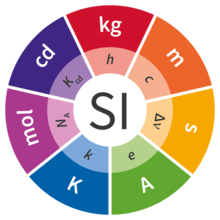
The CODATA Task Group on Fundamental Constants recently produced its 2018 update of a self-consistent set of internationally recommended values of the basic constants and conversion factors of physics and chemistry. This update of values for over 300 constants is the first since a major redefinition of the International System of Units (SI), where exact numerical values for the Planck constant h, elementary charge e, Boltzmann constant k, and Avogadro constant NA were set. These four constants replaced four physical quantities that previously helped define the SI: the mass of the International Prototype Kilogram, the magnetic constant μ0, the temperature of the triple point of water, and the molar mass of carbon-12.
The newly updated fundamental physical constants values are based on a least-squares adjustment that accounts for all theoretical and experimental data available through December 31, 2018. These constants of physics and chemistry include the mass of the electron, the electric and magnetic constants ε0 and m0, theNewton’s Gravitational constant, but also constants of proportionality between units of measurement and physical quantities. These fundamental physical constants are recommended by CODATA for use in all fields of science and technology and are recognized worldwide.
Articles containing all details were simultaneously published in the Journal of Physical and Chemical Reference Data and in the Reviews of Modern Physics, as has been done for decades. JPCRD is a collaboration between the American Institute of Physics and NIST.
The publications provide a discussion of the major improvements as well as inconsistencies within the data. The major improvements include a decrease in the uncertainty of the dimensionless fine-structure constant, about two orders of magnitude improvement of particle masses (due to an exact value for the Planck constant under the new SI). In addition, many other constants have become exact or have significantly reduced uncertainties. The proton charge radius “puzzle” has been partially resolved by improved measurements of hydrogen energy levels. Inconsistencies for the gravitational constant and the muon magnetic-moment anomaly, however, remain.

